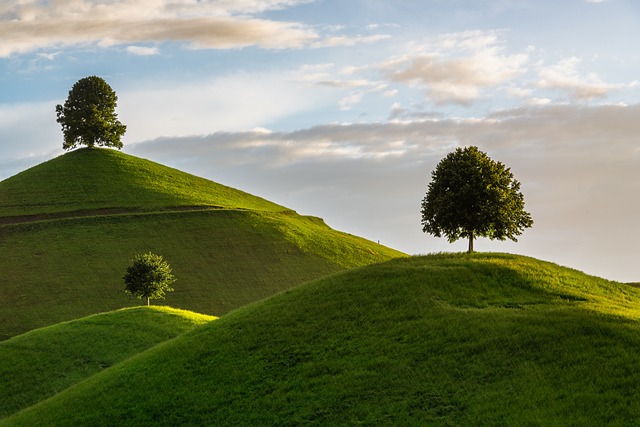“After a storm hits Anderson, SC, damaged trees can pose significant risks to your property and safety. Understanding the extent of storm damage to trees is crucial for effective storm damage cleanup. This article guides you through the process, from assessing hazards to choosing the right tree removal company in Anderson. We explore professional tree removal steps and offer tips for restoring your property post-removal. Ensure a safe and efficient recovery with expert assistance tailored to storm-damaged residential properties.”
- Understanding Storm Damage to Trees on Residential Properties in Anderson, SC
- The Importance of Expert Tree Removal Services After a Storm
- Assessing the Safety Hazards Posed by Storm-Damaged Trees
- Choosing the Right Tree Removal Company for Your Anderson, SC Property
- The Steps Involved in Professional Tree Removal After Storm Damage
- Restoring Your Property After Tree Removal: Tips and Considerations
Understanding Storm Damage to Trees on Residential Properties in Anderson, SC
In Anderson, SC, storm damage can significantly impact residential trees, leading to costly and potentially hazardous situations. Strong winds, heavy rainfall, and lightning strikes frequently cause tree limbs to break, trunks to split, or even uprooting. These events not only leave unsightly debris but also pose safety risks to homeowners and their properties. Prompt recognition of storm-damaged trees is crucial for effective storm damage cleanup for residential properties in Anderson, SC.
Homeowners should regularly inspect their trees after a severe storm, looking for signs like cracked or broken branches, leaning trunks, or exposed roots. If trees show any signs of structural compromise, it’s essential to consult with certified arborists before attempting any removal. Professional tree removal services are equipped with the necessary equipment and expertise to handle large debris safely and responsibly, ensuring that storm-damaged trees on Anderson, SC, residential properties are managed effectively while minimizing further property damage or personal injury risks.
The Importance of Expert Tree Removal Services After a Storm
After a storm, navigating storm damage cleanup for residential properties in Anderson, SC can be overwhelming. One of the most critical tasks is assessing and safely removing damaged trees. Attempting to handle this yourself can be dangerous, especially if large branches or entire trees are involved. Expert tree removal services are indispensable for several reasons.
Professional arborists have the necessary equipment and expertise to tackle fallen trees and branches, minimizing risk to your property and ensuring safety for themselves and your family. They also understand local regulations regarding tree removal, permitting, and disposal, streamlining the cleanup process. Moreover, these services can help restore your property’s beauty and value by removing unsightly debris and providing proper tree care solutions for any remaining healthy trees.
Assessing the Safety Hazards Posed by Storm-Damaged Trees
When a severe storm hits, trees on residential properties in Anderson, SC, can suffer significant damage, becoming potential hazards. Assessing these risks is crucial before attempting any tree removal or cleanup. Fallen branches and uprooting can pose immediate dangers to people and structures, so it’s essential to identify stable versus unstable trees.
Storm-damaged trees may exhibit cracks, broken limbs, or severe leaning, indicating instability. Professionals skilled in storm damage cleanup for residential properties Anderson SC are trained to recognize these signs. They employ specialized equipment and techniques to safely remove hazardous trees, ensuring both the integrity of your property and the well-being of those around it.
Choosing the Right Tree Removal Company for Your Anderson, SC Property
When facing storm damage on your Anderson, SC property, choosing the right tree removal company is crucial. Look for a professional service with experience in storm damage cleanup for residential properties. Companies that specialize in this area understand the challenges unique to post-storm situations, such as fallen trees blocking access or damaged limbs posing safety hazards. Their expertise ensures efficient and safe clearance while minimizing property damage.
Consider companies offering free estimates, 24/7 emergency response, and licensed, insured professionals. Check reviews and ask for references to ensure quality service. A reputable tree removal company will prioritize your safety and property protection during the storm damage cleanup process in Anderson, SC.
The Steps Involved in Professional Tree Removal After Storm Damage
After a storm hits, many homeowners in Anderson, SC, turn to professional tree removal services for their storm damage cleanup. The process involves several crucial steps to ensure safety and effective restoration. First, experts assess the property to identify damaged trees and determine the best course of action. This may include pruning, cutting down, or removing branches to prevent further harm to structures or power lines.
Next, they set up a safe work area and employ specialized equipment to carefully remove the affected trees. Proper disposal of tree debris is also essential, whether it’s chipping, shredding, or hauling away for landscaping or recycling purposes. Throughout the process, safety remains paramount, with certified professionals following industry standards to protect both themselves and your property.
Restoring Your Property After Tree Removal: Tips and Considerations
After expert tree removal services have been conducted on your storm-damaged property in Anderson, SC, it’s crucial to consider the subsequent steps for a successful restoration. The first step is clearing away any debris left behind by the storm and the subsequent tree removal process. This includes branches, trunk remnants, and any other plant matter that could pose hazards or interfere with cleanup efforts.
Once your property is clear, assess the overall health of your landscape. Determine which plants can be salvaged and which ones might need to be replanted. Consider native species that are better suited for Anderson’s climate, as they often require less maintenance and can help attract local wildlife. Prioritize safety during the restoration process by ensuring any structural damage caused by fallen trees is addressed before continuing with landscaping efforts.
